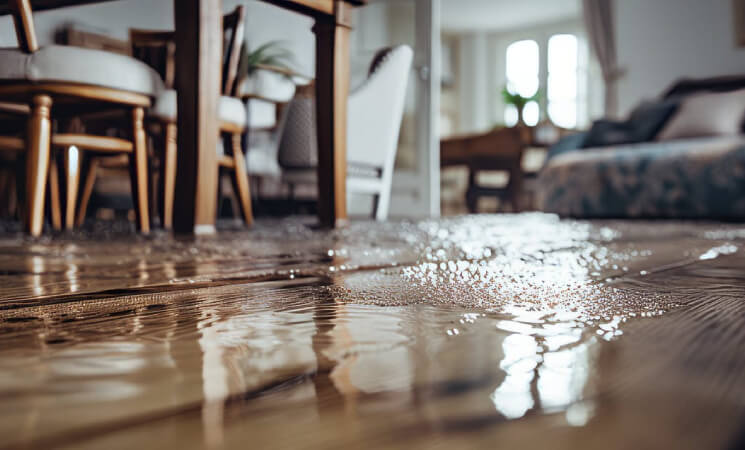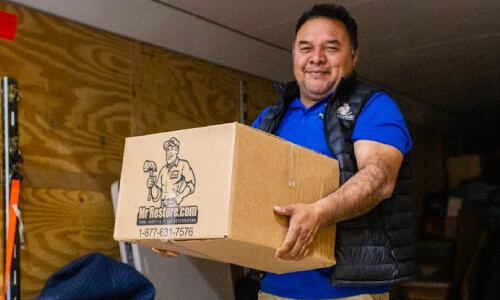If you haven’t completed a home inventory yet, now is a perfect time. It is a great way to prepare in an event of a fire, water, or storm damage. Here are a few tips and resources to help you get started on the process.
Why do I need to complete a home inventory?
- An accurate valuation of your property and belongings helps make sure you have enough insurance coverage BEFORE you suffer a loss due to fire or water damage or even theft. (Replacement and repair costs fluctuate; you don’t want to be short-changed if your property and belongings suffer fire, smoke, or water damage.)
- In case of damage or loss through fire, flood, or theft, an accurate valuation of your belongings speeds up the claims process and will help you get back to normal faster. (Where have we heard that catchphrase before?)How do I complete a home inventory?
How do I complete a home inventory?
Start by making a list of your belongings. You’ll want to include a description of each item and purchase details wherever possible. Including photos and appraisals is helpful, too.
- For items like clothing, a basic count of each type is sufficient: pants, suits, shoes, etc. If anything is particularly valuable, include that information.
- For electronic equipment and your major appliances, including serial numbers.
- Jewelry, art, and antiques are examples of items for which an appraisal is recommended.
There are lots of ways to complete the inventory process, so it’s easy to find a method that will work for you.
Pen and Paper
Write it all down, attaching receipts, appraisals, photos, etc. You can download helpful inventory checklists from your insurance company’s website or pick them up from your insurance agent. The Rocky Mountain Insurance Information Association has a downloadable form at: http://www.rmiia.org/downloads/Home_Inventory_list.doc
Computer
Your PC is a great resource for completing a home inventory (and be sure to document its value while you’re at it). Again, many insurance companies have software available (as does RMIIA), and versatile applications are available for Windows and Apple machines. Your home office software may even include a spreadsheet template that you can adapt to your specific needs.
Phone or Tablet
For maximum mobility, a phone or tablet app is great. Of the many options available, some interact with your home computer, syncing through iCloud or Dropbox-type connection or letting you save to an online database. Some allow you to take and attach photos as you go easily. Many apps have free and paid versions, allowing you to opt-in for your preferred features and services.
For Android users: This article at About.com: http://financialsoft.about.com/od/pdasoftware/tp/Top-4-Home-Inventory-Android-Apps-2013.htm, lists the pros and cons of 4 useful apps:
- Encircle: Home Inventory (This one has a nifty feature where you take a picture of a room and then can tag and label each item in the room!)
- III (Insurance Information Institute) Inventory – Know Your Stuff
- Home Inventory Organizer – SmartWare Inc
- MyHome Pro: Home Inventory – Access Lane, Inc.
Apple users can check out:
- Home Inventory by Binary Formations
- Compartments – Organize Your Stuff by LittleFin LLC
- Tap Forms Organizer and Secure Database by Tap Zapp Software Inc. (requires separate apps for each platform – phone, tablet, computer, but you can sync between them)
- Itemizer by Digital2Analog Software Inc.
Many of the Android titles listed above are also available for iPhone and iPad.
However you complete your home inventory, it is essential that you keep your inventory or a full copy in a secure, off-site location.
You can use a Safe Deposit Box or off-site safe for hard copies, storage discs, or flash drives. You can also leave a copy with your attorney, trusted friend, or family member. Multiple locations are best because you’ll want easy and immediate access to your inventory in the event of fire, storm, or flood damage. At Mr. Restore, we hope you never have to refer to your home inventory in a crisis situation. In the event of a fire, flood, or water damage to your possessions, we hope we’ve helped you better prepare. And remember, Mr. Restore is available 24/7 to make sure you get back to normal faster. Additional online resources:
- https://www.knowyourstuff.org
- https://enservio.com/
- https://www.homezada.com
Helpful Hint: When making a home inventory, create a “room” named Documents and attach photos of important papers like: Social Security cards; Auto/Home Deeds; Marriage, Birth and Death Certificates; etc.






